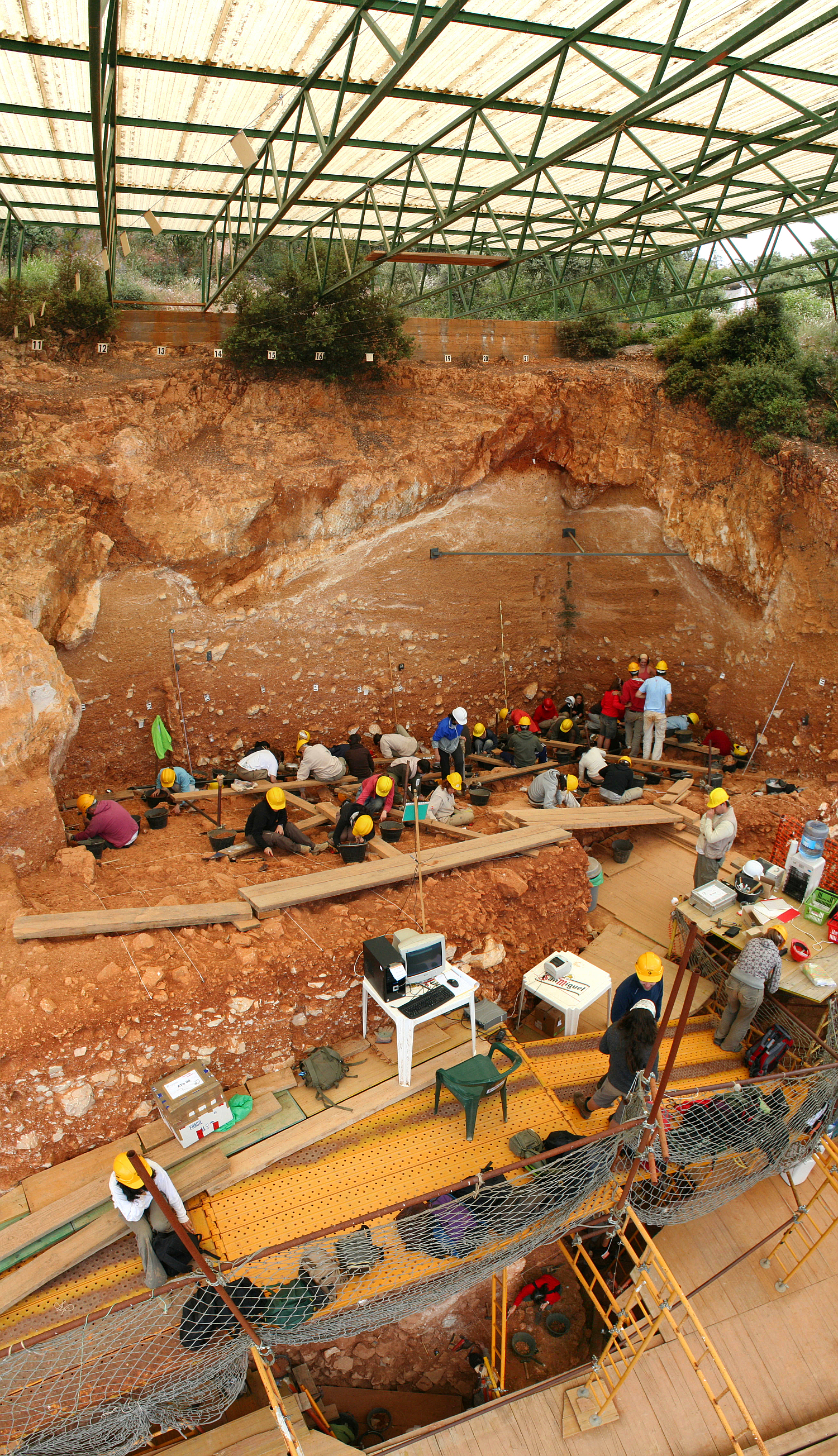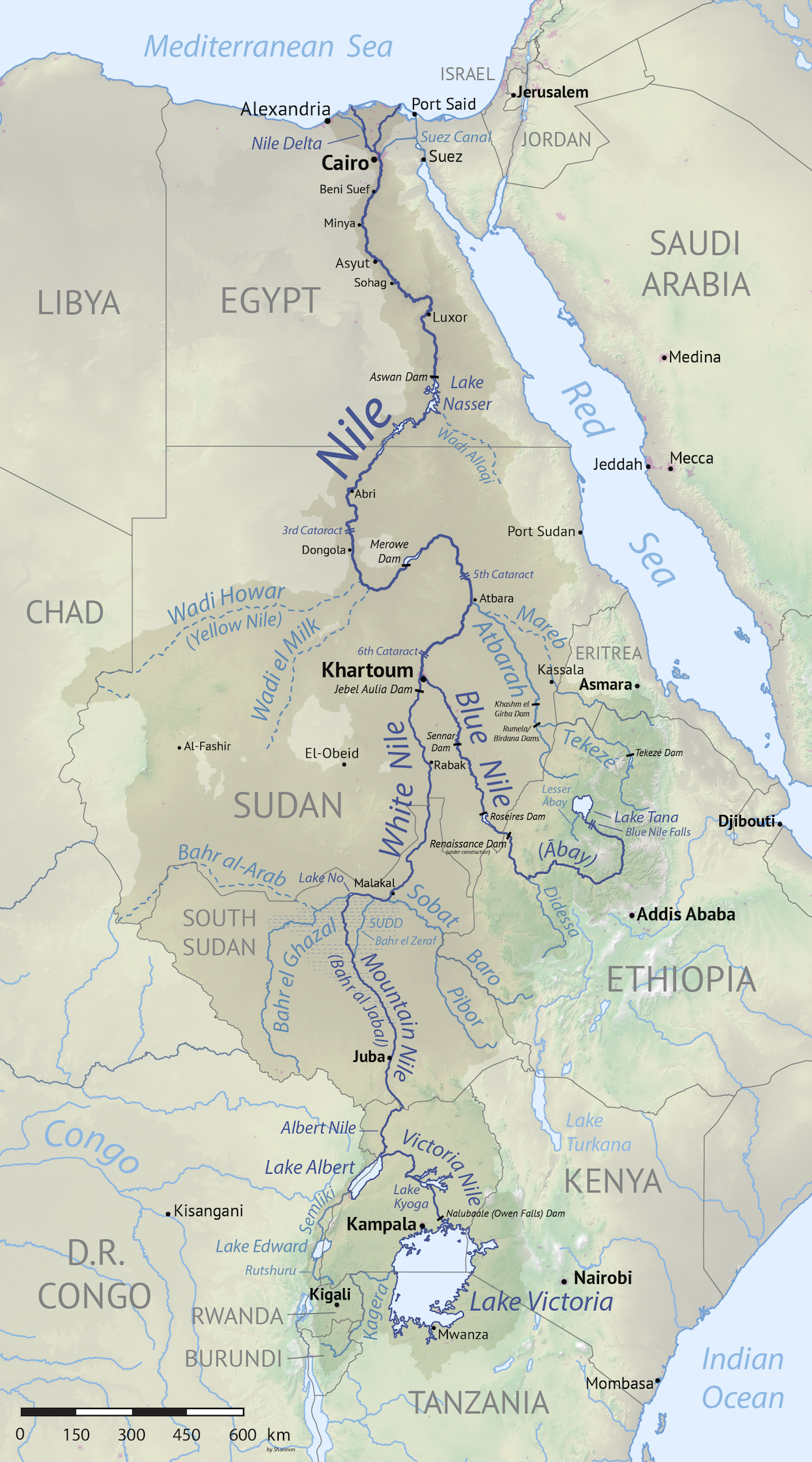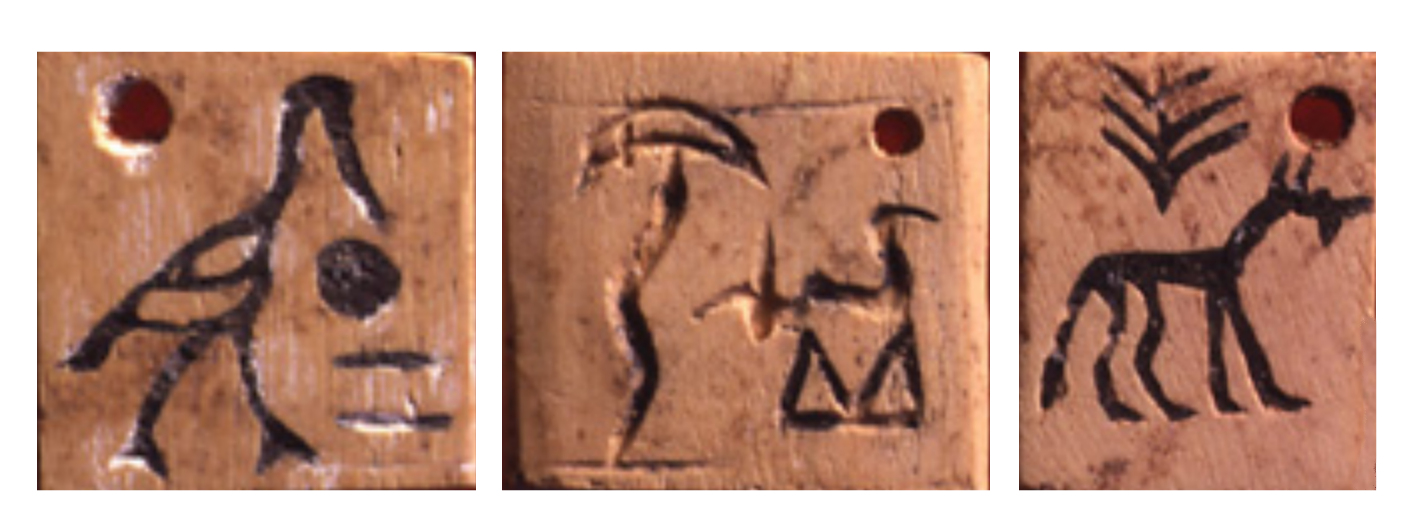|
Egyptian Statue Of Darius I
The Egyptian statue of Darius the Great is a statue of Achaemenid king Darius the Great with Egyptian iconography and inscriptions, kept at National Museum of Iran. It is the best known example of in-the-round statuary that has remained from the Achaemenid Empire. Darius is depicted wearing a Persian dress, and armed with a dagger at his belt. The pleats of the right side of the robe are inscribed in Old Persian, Elamite and Babylonian cuneiform. The other side of the robe is inscribed with hieroglyphs. According to these inscriptions, the statue was made in Egypt at the request of Darius. This would have followed the Achaemenid conquest of Egypt. The base of the statue is in Egyptian style. The front and back has a depiction of Hapi, the Egyptian god of the Nile. The sides represent rows of vassals from numerous countries, with a total of twenty-four cartouches. The statue was made in Egypt from grey granite, but was then transported to Susa, possibly by Xerxes I. The statue ... [...More Info...] [...Related Items...] OR: [Wikipedia] [Google] [Baidu] [Amazon] |
National Meusem Darafsh 6 (42)
National may refer to: Common uses * Nation or country ** Nationality – a ''national'' is a person who is subject to a nation, regardless of whether the person has full rights as a citizen Places in the United States * National, Maryland, census-designated place * National, Nevada, ghost town * National, Utah, ghost town * National, West Virginia, unincorporated community Commerce * National (brand), a brand name of electronic goods from Panasonic * National Benzole (or simply known as National), former petrol station chain in the UK, merged with BP * National Book Store, a bookstore and office supplies chain in the Philippines * National Car Rental, an American rental car company * National Energy Systems, a former name of Eco Marine Power * National Entertainment Commission, a former name of the Media Rating Council * National Motor Vehicle Company, Indianapolis, Indiana, USA 1900–1924 * National Radio Company, Malden, Massachusetts, USA 1914–1991 * National Supermarket ... [...More Info...] [...Related Items...] OR: [Wikipedia] [Google] [Baidu] [Amazon] |
First Achaemenid Conquest Of Egypt
The first Achaemenid conquest of Egypt took place in 525 BCE, leading to the foundation of the Twenty-seventh Dynasty of Egypt, also known as the "First Egyptian Satrapy" (). Egypt thus became a satrapy of the Achaemenid Empire until 404 while still maintaining Egyptian royalty customs and positions. The conquest was led by Cambyses II, who defeated the Egyptians at the Battle of Pelusium (525 BCE), and crowned himself pharaoh. Achaemenid rule was disestablished upon the rebellion and crowning of Amyrtaeus as Pharaoh. A second period of Achaemenid rule in Egypt occurred under the Thirty-first Dynasty of Egypt (343–332 BCE). Origin of the conflict according to Herodotus Herodotus describes how Pharaoh Amasis II would eventually cause a confrontation with Persia. According to Herodotus, Amasis was asked by Cyrus the Great or Cambyses II for an Egyptian ophthalmologist on good terms. Amasis seems to have complied by forcing an Egyptian physician into mandatory labor, causing him t ... [...More Info...] [...Related Items...] OR: [Wikipedia] [Google] [Baidu] [Amazon] |
Archaeological Discoveries In Iran
Archaeology or archeology is the study of human activity through the recovery and analysis of material culture. The archaeological record consists of Artifact (archaeology), artifacts, architecture, biofact (archaeology), biofacts or ecofacts, archaeological site, sites, and cultural landscapes. Archaeology can be considered both a social science and a branch of the humanities. It is usually considered an independent academic discipline, but may also be classified as part of anthropology (in North America – the four-field approach), history or geography. The discipline involves Survey (archaeology), surveying, Archaeological excavation, excavation, and eventually Post excavation, analysis of data collected, to learn more about the past. In broad scope, archaeology relies on cross-disciplinary research. Archaeologists study human prehistory and history, from the development of the first stone tools at Lomekwi in East Africa 3.3 million years ago up until recent decades. A ... [...More Info...] [...Related Items...] OR: [Wikipedia] [Google] [Baidu] [Amazon] |
1972 Archaeological Discoveries
Year 197 ( CXCVII) was a common year starting on Saturday of the Julian calendar. At the time, it was known as the Year of the Consulship of Magius and Rufinus (or, less frequently, year 950 ''Ab urbe condita''). The denomination 197 for this year has been used since the early medieval period, when the Anno Domini calendar era became the prevalent method in Europe for naming years. Events By place Roman Empire * February 19 – Battle of Lugdunum: Emperor Septimius Severus defeats the self-proclaimed emperor Clodius Albinus at Lugdunum (modern Lyon). Albinus commits suicide; legionaries sack the town. * Septimius Severus returns to Rome and has about 30 of Albinus's supporters in the Senate executed. After his victory he declares himself the adopted son of the late Marcus Aurelius. * Septimius Severus forms new naval units, manning all the triremes in Italy with heavily armed troops for war in the East. His soldiers embark on an artificial canal between the Tigris a ... [...More Info...] [...Related Items...] OR: [Wikipedia] [Google] [Baidu] [Amazon] |
6th-century BC Sculptures
The 6th century is the period from 501 through 600 in line with the Julian calendar. In the West, the century marks the end of Classical Antiquity and the beginning of the Middle Ages. The collapse of the Western Roman Empire late in the previous century left Europe fractured into many small Germanic kingdoms competing fiercely for land and wealth. From the upheaval the Franks rose to prominence and carved out a sizeable domain covering much of modern France and Germany. Meanwhile, the surviving Eastern Roman Empire began to expand under Emperor Justinian, who recaptured North Africa from the Vandals and attempted fully to recover Italy as well, in the hope of reinstating Roman control over the lands once ruled by the Western Roman Empire. Owing in part to the collapse of the Roman Empire along with its literature and civilization, the sixth century is generally considered to be the least known about in the Dark Ages. In its second golden age, the Sassanid Empire reached the p ... [...More Info...] [...Related Items...] OR: [Wikipedia] [Google] [Baidu] [Amazon] |
Arachosia
Arachosia (; ), or Harauvatis ( ), was a satrapy of the Achaemenid Empire. Mainly centred around the Arghandab River, a tributary of the Helmand River, it extended as far east as the Indus River. The satrapy's Persian-language name is the etymological equivalent of in Vedic Sanskrit. In Greek, the satrapy's name was derived from , the Greek-language name for the Arghandab River. Around 330 BCE, Alexander the Great commissioned the building of Alexandria Arachosia as Arachosia's new capital city under the Macedonian Empire. It was built on top of an earlier Persian military fortress after Alexander's conquest of Persia. Etymology "Arachosia" is the Latinized form of Greek (''Arachōsíā''). "The same region appears in the Avestan '' Vidēvdāt'' (1.12) under the indigenous dialect form 𐬵𐬀𐬭𐬀𐬓𐬀𐬌𐬙𐬍 - (whose ''-axva-'' is typical non-Avestan)." In Old Persian inscriptions, the region is referred to as 𐏃𐎼𐎢𐎺𐎫𐎡𐏁, written ''h ... [...More Info...] [...Related Items...] OR: [Wikipedia] [Google] [Baidu] [Amazon] |
Sattagydia
Sattagydia (Old Persian: 𐎰𐎫𐎦𐎢𐏁 ''Thataguš'', country of the "hundred cows") was one of the easternmost regions of the Achaemenid Empire, part of its Seventh tax district according to Herodotus, along with Gandārae, Dadicae and Aparytae. It was situated east of the Sulaiman Mountains up to the Indus River in the basin around Bannu in modern day's southern Khyber Pakhtunkhwa, Pakistan. Geography The location of Sattagydia has been subject to debate. Its association with Gandara in the 7th tax district of the Herodotus list implies that it was close to Gandara. Olmstead believed that it stretched from "the lower slopes of the Hindu Kush". Based on these considerations, two locations have been proposed: the first being "the area of the confluence of the Ghorband and Panjshir rivers in Afghanistan", and the second, "the area of the middle Indus, around the modern city of Bannu". Following recent archaeological findings, the Bannu basin has become the favoured c ... [...More Info...] [...Related Items...] OR: [Wikipedia] [Google] [Baidu] [Amazon] |
India
India, officially the Republic of India, is a country in South Asia. It is the List of countries and dependencies by area, seventh-largest country by area; the List of countries by population (United Nations), most populous country since 2023; and, since its independence in 1947, the world's most populous democracy. Bounded by the Indian Ocean on the south, the Arabian Sea on the southwest, and the Bay of Bengal on the southeast, it shares land borders with Pakistan to the west; China, Nepal, and Bhutan to the north; and Bangladesh and Myanmar to the east. In the Indian Ocean, India is near Sri Lanka and the Maldives; its Andaman and Nicobar Islands share a maritime border with Thailand, Myanmar, and Indonesia. Modern humans arrived on the Indian subcontinent from Africa no later than 55,000 years ago., "Y-Chromosome and Mt-DNA data support the colonization of South Asia by modern humans originating in Africa. ... Coalescence dates for most non-European populations averag ... [...More Info...] [...Related Items...] OR: [Wikipedia] [Google] [Baidu] [Amazon] |
Xerxes I
Xerxes I ( – August 465 BC), commonly known as Xerxes the Great, was a List of monarchs of Persia, Persian ruler who served as the fourth King of Kings of the Achaemenid Empire, reigning from 486 BC until his assassination in 465 BC. He was the son of Darius the Great and Atossa, a daughter of Cyrus the Great. In Western history, Xerxes is best known for his Second Persian invasion of Greece, invasion of Greece in 480 BC, which ended in Persian defeat. Xerxes was designated successor by Darius over his elder brother Artobazan and inherited a large, multi-ethnic empire upon his father's death. He consolidated his power by crushing revolts in Twenty-seventh Dynasty of Egypt, Egypt and Babylonian revolts (484 BC), Babylon, and renewed his father's campaign to subjugate Ancient Greece, Greece and punish Classical Athens, Athens and its allies for their interference in the Ionian Revolt. In 480 BC, Xerxes personally led a large army and crossed the Dardanelles, Hellespont into Eu ... [...More Info...] [...Related Items...] OR: [Wikipedia] [Google] [Baidu] [Amazon] |
Nile
The Nile (also known as the Nile River or River Nile) is a major north-flowing river in northeastern Africa. It flows into the Mediterranean Sea. The Nile is the longest river in Africa. It has historically been considered the List of river systems by length, longest river in the world, though this has been contested by research suggesting that the Amazon River is slightly longer.Amazon Longer Than Nile River, Scientists Say Of the world's major rivers, the Nile has one of the lowest average annual flow rates. About long, its drainage basin covers eleven countries: the Democratic Republic of the Congo, Tanzania, Burundi, Rwanda, Uganda, Kenya, Ethiopia, Eritrea, South Sudan, Sudan, and Egypt. In pa ... [...More Info...] [...Related Items...] OR: [Wikipedia] [Google] [Baidu] [Amazon] |
Hapi (Nile God)
Hapi (Ancient Egyptian: ''ḥꜥpj'') Also spelled Hapy was the god of the annual flooding of the Nile in ancient Egyptian religion. The flood deposited rich silt (fertile soil) on the river's banks, allowing the Egyptians to grow crops.Wilkinson, p.106 Hapi was greatly celebrated among the Egyptians. Some of the titles of Hapi were "Lord of the Fish and Birds of the Marshes" and "Lord of the River Bringing Vegetation". Hapi is typically depicted as an androgyny, androgynous figure with a prominent belly and large drooping breasts, wearing a loincloth and ceremonial false beard,Wilkinson, p.107 depicted in hieroglyphics as an intersex person. Mythology The annual flooding of the Nile occasionally was said to be the ''Arrival of Hapi''. Since this flooding provided fertility, fertile soil in an area that was otherwise desert, Hapi symbolised fertility. He had large female breasts because he was said to bring a rich and nourishing harvest. Due to his fertile nature he was sometimes c ... [...More Info...] [...Related Items...] OR: [Wikipedia] [Google] [Baidu] [Amazon] |
Hieroglyphs
Ancient Egyptian hieroglyphs ( ) were the formal writing system used in Ancient Egypt for writing the Egyptian language. Hieroglyphs combined ideographic, logographic, syllabic and alphabetic elements, with more than 1,000 distinct characters.In total, there were about 1,000 graphemes in use during the Old Kingdom period; this number decreased to 750–850 during the Middle Kingdom, but rose instead to around 5,000 signs during the Ptolemaic period. Antonio Loprieno, ''Ancient Egyptian: A Linguistic Introduction'' (Cambridge: Cambridge UP, 1995), p. 12. Cursive hieroglyphs were used for religious literature on papyrus and wood. The later hieratic and demotic Egyptian scripts were derived from hieroglyphic writing, as was the Proto-Sinaitic script that later evolved into the Phoenician alphabet. Egyptian hieroglyphs are the ultimate ancestor of the Phoenician alphabet, the first widely adopted phonetic writing system. Moreover, owing in large part to the Greek and Aramaic scripts ... [...More Info...] [...Related Items...] OR: [Wikipedia] [Google] [Baidu] [Amazon] |






